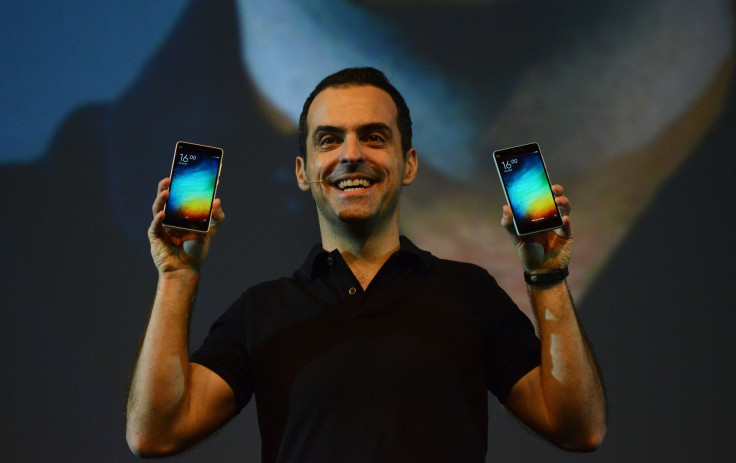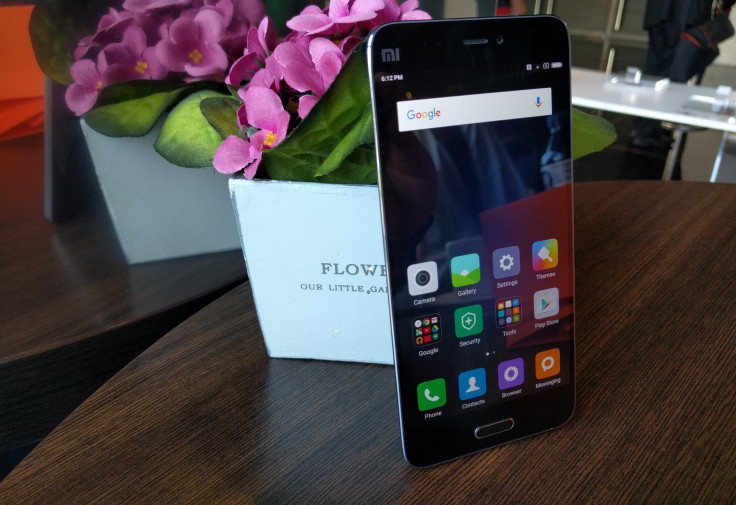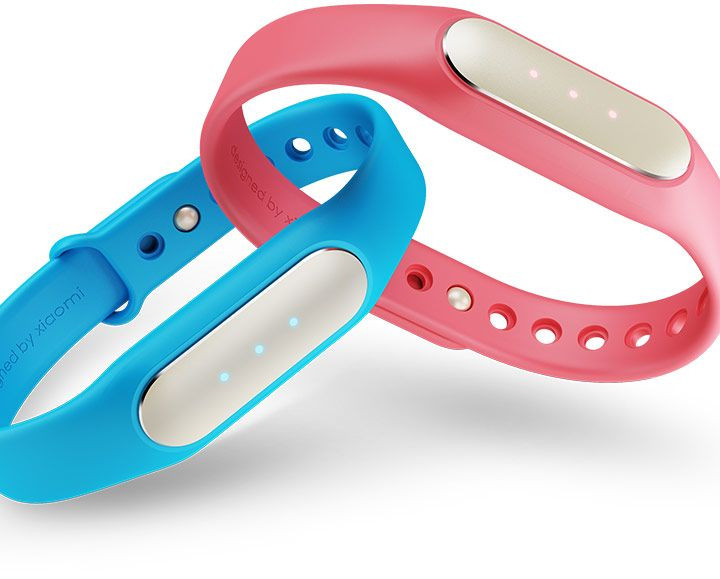The Future Of Xiaomi: China’s Most-Valuable Startup Is Looking Well Beyond The Smartphone

BARCELONA, Spain – Xiaomi was briefly the world’s most valuable startup, but a year of missed targets and slowing sales mean the Chinese company now faces an uncertain future. Once known as the “Apple of the East,” its executives are hoping that the company's ecosystem of products and services — with the smartphone as a foundation — will help Xiaomi surmount challenges facing other Android phone makers like Samsung and LG.
The smartphone explosion is over: Double-digit growth has ended and penetration has reached 65 percent in the U.S. and 72 percent in urban China, according to Kanter Worldpanel ComTech. Upgrade cycles are getting longer and with growth in economies like China slowing, it means tough times ahead for all smartphone manufacturers.
For Xiaomi, which only sells its smartphones in a handful of growth markets like China and India, that presents an even greater problem — but the company believes that by focusing on “internet-savvy” customers it will continue to grow by selling products and services around the phone itself.
On Wednesday at Mobile World Congress (MWC). the company’s head of international development, Hugo Barra, rolled onto stage on a hoverboard from Ninebot, one of the 50 or so companies Xiaomi has either invested in or bought in the last couple of years.
Barra was in Barcelona for the company’s first European news conference where it launched the Mi 5 smartphone. The world’s technology press were in attendance, anticipating news of an expansion into western markets. It never came, and 90 minutes after rolling onto the stage, Barra rolled off it without addressing the elephant in the room.
“I was disappointed we didn’t hear more about the international markets today,” Ben Wood, lead researcher at CCS Insight, told International Business Times. “I had an expectation today, particularly because it was an event in Europe, that they had an announcement about their plans to expand into western markets.”

Xiaomi, which was founded just six years ago, sells its smartphones in just nine countries, but China is far and away its biggest market, accounting for the vast majority of the 70 million smartphones it sold in 2015. That figure was well below the 100 million target the company set 12 months ago when an investment of over $1.1 billion valued it at $45 billion. Xiaomi even missed a revised target of 80 million set in the middle of the year and reportedly also missed its revenue targets in 2015. Despite this, Barra told IBT on Wednesday that targets don't matter.
“We’re don’t set targets,” Barra said. “That’s not our approach to business. We are an internet company, we focus on acquiring internet-savvy users.”
In other words, this is the key to Xiaomi’s strategy: It is targeting a specific demographic that will generate vastly more revenue for the company than those customers who buy Samsung, Huawei or even Apple smartphones.
“When you look at rankings of internet usage, Xiaomi phones are always ranked at the very top, because the people who buy our phones consume a ton of digital content, download a lot of apps, use the internet all the time,” Barra said. To back up his point, Barra said than nine out of the top 10 active smartphones on Tencent's array of internet services — including messaging services like WeChat — are Xiaomi devices.
While the company will look to sell more smartphones than it did last year, that's no longer the main goal for Xiaomi. Barra argues that active user base is the most important metric for an internet company like Xiaomi, not shipments, pointing out that there are 170 million active users of its MIUI software around the world.
MIUI is a version of Android that features Xiaomi’s own app stores and services. Xiaomi has more than 750 employees working solely on developing MIUI, Barra said, adding that since it launched more than five years ago, there have been 275 updates pushed out to customers. Software is one aspect of how Xiaomi creates stickiness with its customers, but increasingly it is also doing that with hardware.
The reason Xiaomi has invested in so many companies is to build an ecosystem of products, all of which connect or are controlled by its smartphones.
Xiaomi revealed Wednesday that it is the world’s biggest seller of battery packs, which it began selling in the U.S. and Europe last year, and thanks to its budget Mi Band fitness tracker, Xiaomi is now the world’s third-biggest wearables company, behind Fitbit and Apple.
In addition to power banks and fitness trackers, Xiaomi sells smart TVs, connected weighing scales, action cameras, air purifiers and more. In China, Xiaomi has a fanatical and loyal user base that buys into its ecosystem as a whole.

“Our focus is going after these internet-savvy consumers; they are e-commerce buyers,” Barra said. “Not only are they buying our phones, they are buying our accessories, they are buying our lifestyle products.”
Barra said it would be continually adding to its ecosystem of devices and in particular in the area of virtual reality. “We are excited about VR, we certainly are looking into it. We have quite a few perspectives.”
As smartphone hardware becomes commoditized, more manufacturers will be looking to replicate Xiaomi’s business model. At MWC this year the trend is already apparent. Samsung reiterated its lead in VR with the Gear 360 camera joining its Gear VR headset, while Sony announced a range of smart products that will work with its new smartphones. LG has even got a name for its ecosystem of products — Friends — which includes a VR headset, spherical robot and 360-degree camera.
“The future for all phone makers is trying to develop revenues around the device,” Wood said. “All manufacturers need to move towards the Xiaomi model. The question for Xiaomi is can it replicate its success in China in other markets.
The challenges of doing this are threefold.
As a relative unknown in western markets it will need to spend a lot of money in order to make consumers aware of who it is. The first problem with this is the company’s name, which westerners find hard to pronounce. To that end it is selling its accessories in the U.S. and Europe under the Mi brand, which stands for “mobile internet.”
By selling the accessories in those markets it is already laying the groundwork for raising the brand awareness when it eventually does launch its smartphones. The press conference in Barcelona was another step along that journey. “This is a great start. They have the world’s media here. They will get some momentum out of that. They raised the profile of the brand,” Wood said.
The second major problem Xiaomi faces is its lack of patents. During his presentation, Barra made a point of saying the company had filed 3,600 patents in the last 12 months alone, though it isn’t clear if all of these relate to its smartphones.
Many people believe that Xiaomi would face legal challenges from more established companies to its phones going on sale in western markets. Without dealing these issues and launching in new markets, 2016 is going to be another tough year for the company. “For Xiaomi to have a breakthrough year in 2016, they need to overcome the issues around intellectual property to make it possible for them to sell their phones elsewhere.”
As well as filing more patents, a key factor in Xiaomi’s expansion will be its partnership with Qualcomm, which provides the chips for a many of Xiaomi’s smartphones, including the Mi 5. At the launch event Wednesday, Qualcomm was mentioned numerous times by Barra as a key partner in developing its smartphone strategy.
The final challenge for Xiaomi is overcoming the power of Google. In China where Google services such as the Play Store, YouTube and Maps are not available, it is much easier for Xiaomi to make money from the sales of apps, games and services. Doing that outside of China will not be so easy.
“Outside China, Xiaomi’s services are installed alongside Google’s services, creating the potential for consumer confusion, but importantly weakening the consumer benefit of Xiaomi’s optimized software design,” Ian Fogg, head of mobile at IHS Technology, said.
© Copyright IBTimes 2024. All rights reserved.






















